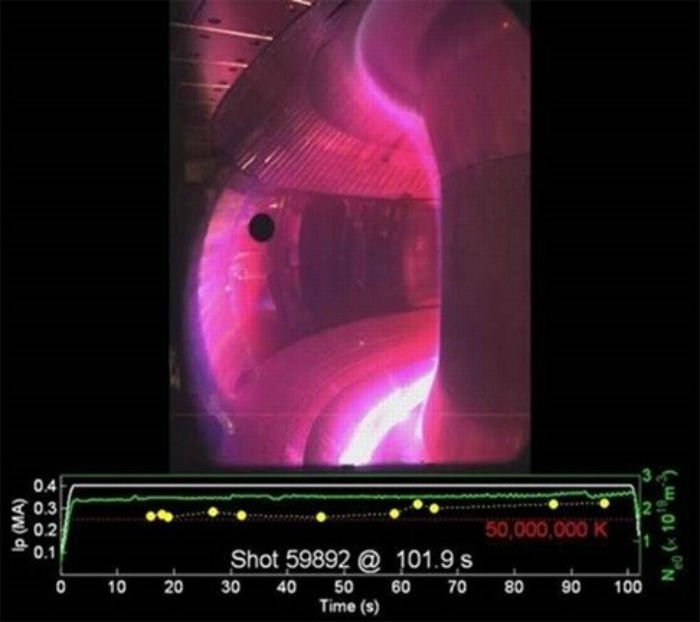
SUSTAINING THE HEAT
Barely a week after Germany’s latest Stellerator reactor was able to sustain a cloud of hydrogen plasma for a quarter of a second at 80 million degrees Celsius, news from China indicated that Germany might now have new competition on the block.
Chinese physicists have announced that their own nuclear fusion reactor, called the Experimental Advanced Superconducting Tokamak (EAST), has produced and sustained hydrogen plasma at 49.999 million degrees Celsius for 102 seconds.
To put that into context, the team, which hails from China’s Institute of Physical Science, states that they were able to create hydrogen and heat it to conditions mimicking what we find at the center of stars. And they were able to sustain these conditions for over a minute.
These milestones, that of Germany and China, represent a proof of concept for controlled nuclear fusion. Through these experiments, scientists could eventually come to manipulate the plasma away from the walls of the reactor and harness the energy and particles that it releases. If these records could be outclassed in the future, it would go a long way to achieving clean, limitless energy for our needs.
HOTTER THAN THE SUN

In contrast to nuclear fission, nuclear fusion is able to produce huge amounts of energy without any radioactive waste or the costs needed to manage nuclear byproducts.
What’s stopping nuclear fusion from replacing most of our nuclear power plants is the technical challenges to making it into a reality.
While nuclear fission requires heating for it to occur, the scale needed to achieve fusion is much larger, a few hundred degrees for fission compared to million of degrees for fusion.
The team behind Germany’s US$1 billion stellarator nuclear fusion machine believes that the ideal temperature is 100 million degrees Celsius and China’s team was aiming for the same benchmark. Instead, they had to settle for almost 50 million degrees.
Their ultimate goal is to achieve 100 million degrees Celsius and maintain for around 1,000 seconds.
The German team says that it could potentially maintain its plasma at 80 million degrees for as long as 30 minutes.
Notably, the result from China is based on a press release with no publication in any journal so far. To that end, details still need to be confirmed. However, if the claims do hold up, the competition between the two teams may lead to a breakthrough that would allow for development of practical nuclear fusion, even if it remains decades away…after all, that’s just the blink of an eye in the grand scheme of things.